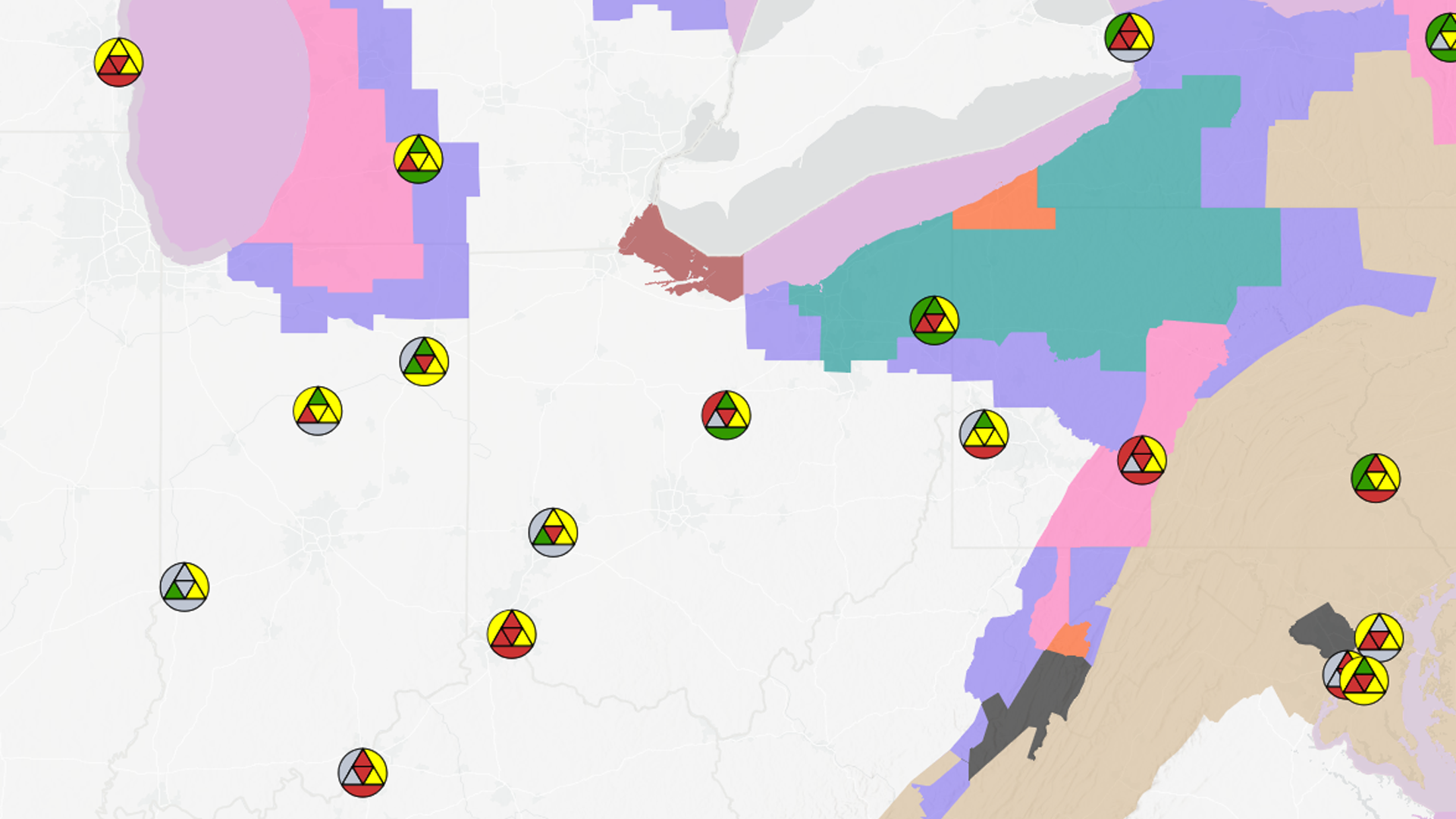
BLUF: Use the Status Indicator Symbology to display clear and concise status information for locations of interest.
Imagine a command center – something dimly lit with a multitude of displays giving a variety of real-time feeds. The mission commander walks in and needs a brief about the status of the operation. “What’s going on with that base over there? Why’s the status red?”

An analyst swiftly pulls up a map, interacting with it as a series of attributes appearing in a pop-up. They scroll through the list, offering a detailed breakdown of the base’s current red alert status. While the information is thorough, it’s clear the symbol representing the status could be more intuitive.
What if the key status indicator fields were integrated directly into the symbology? With the Status Indicator Symbology, a clearer, more comprehensive visual representation would instantly provide the commander with all the critical details.
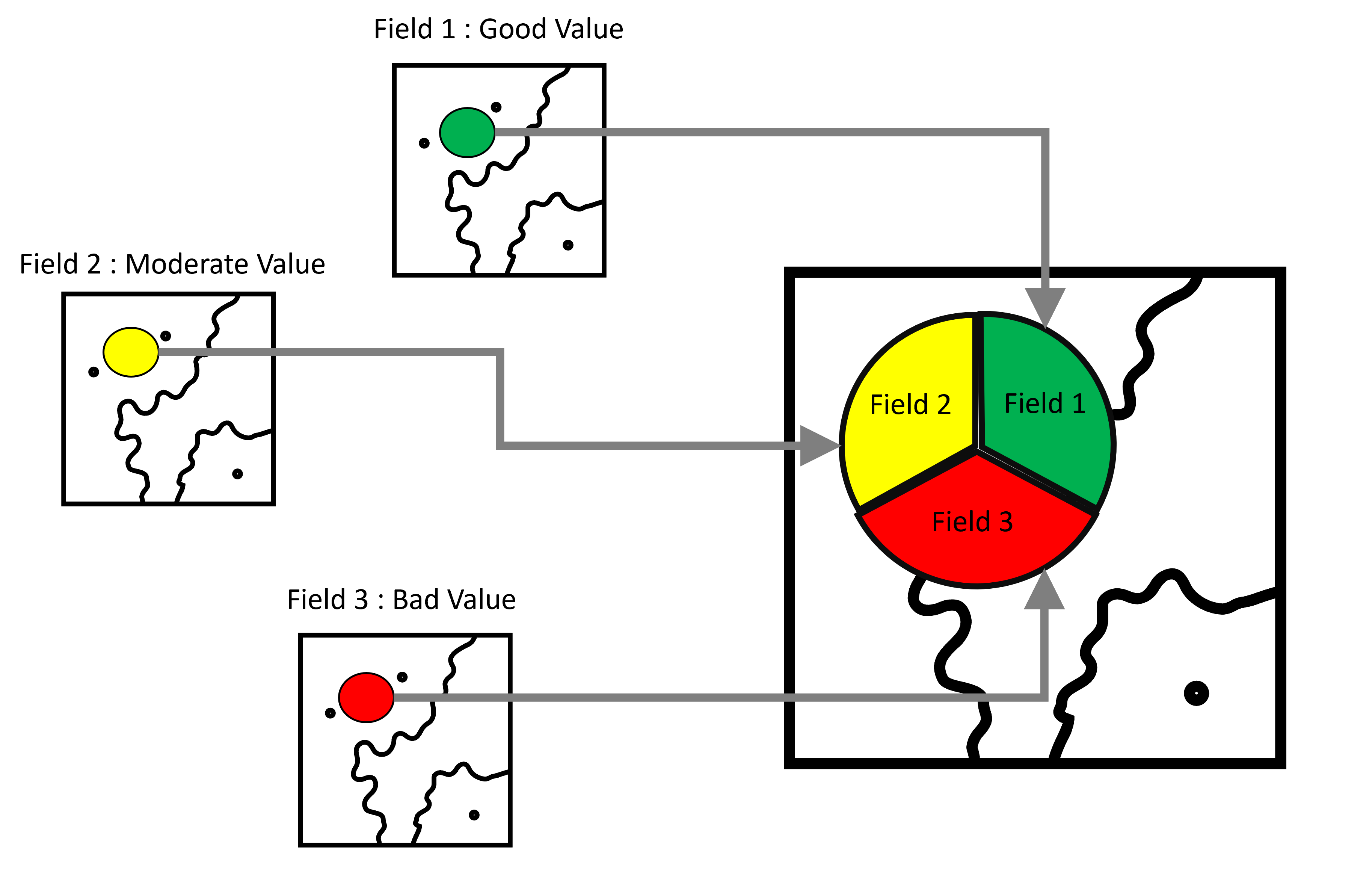
Organizations need to understand the overall status of an event, office, base, or sensor location. Each one of these locations may have multiple attributes that describe it. This is where dictionary styles come into play. A dictionary renderer uses a dictionary style along with attributes from your data to dynamically generate information rich symbols.
The Status Indicator Symbology dictionary styles can be used to configure layers with a dictionary renderer in ArcGIS Pro. When a user configures the fields in their layer that should be used by the style, the dictionary renderer will automatically generate multi-faceted status symbols in the map.
The map below displays base locations and their status for intelligence using a unique value renderer. In the pop-up, there are three fields (intelligence, personnel, logistics) that contain a status value (low, moderate, high suitability). To get the information on the other status fields, a user would need to interact with the map, whether by clicking and seeing a pop-up, or, creating multiple copies of the layer with the other fields driving the symbology.
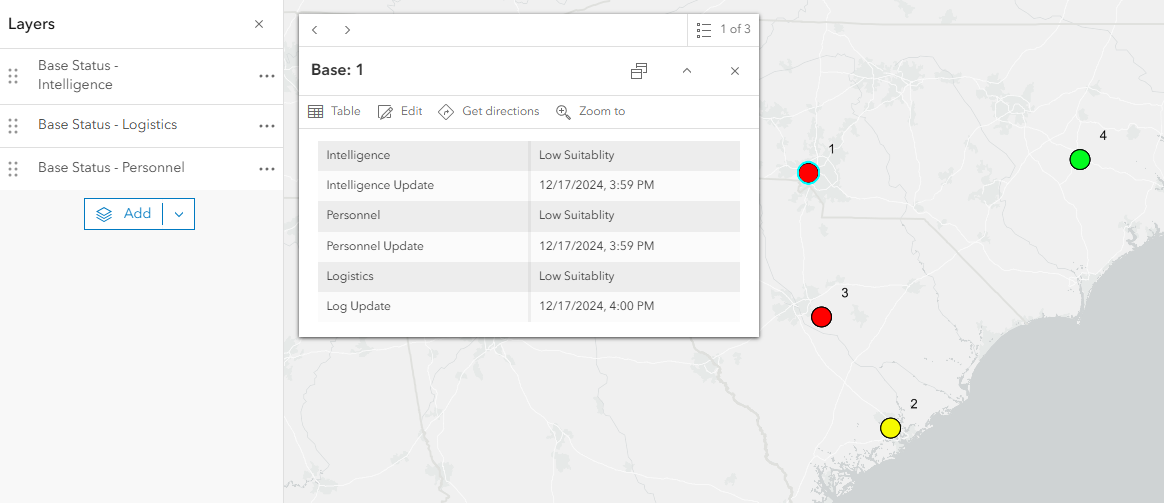
The Status Indicator Symbology allows the user to map those fields to different portions of a symbol, streamlining the visual so that map interaction wouldn’t be needed.
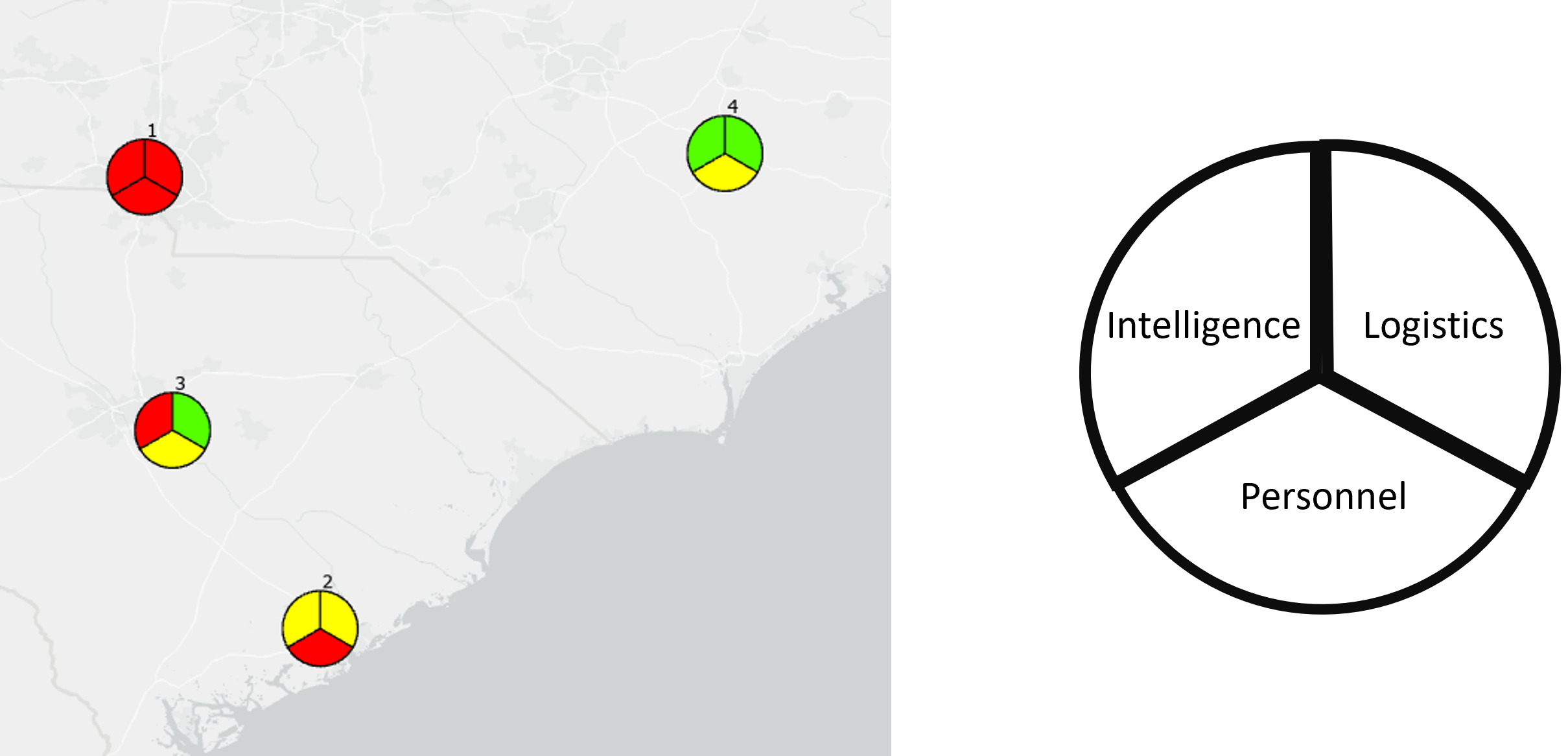
We have created a sample web application to demonstrate the Status Indicator Symbology and how it compares to mapping single variables. In the application, edit the table values and see how the pie chart and map icons change.
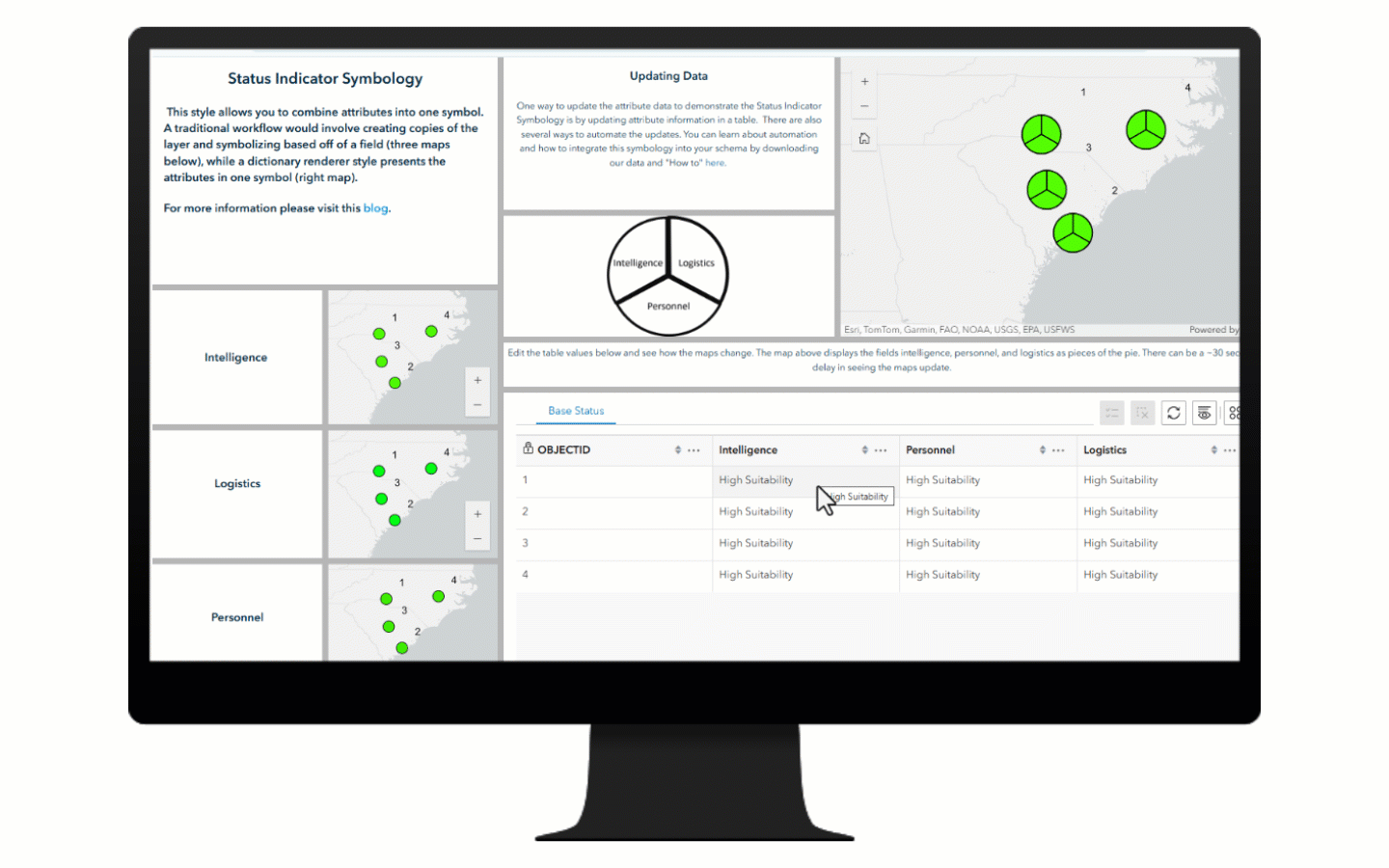
The example above displays a three field symbol, but we have created the Status Indicator Symbology style files to support up to seven fields, with five customizations of each symbol.
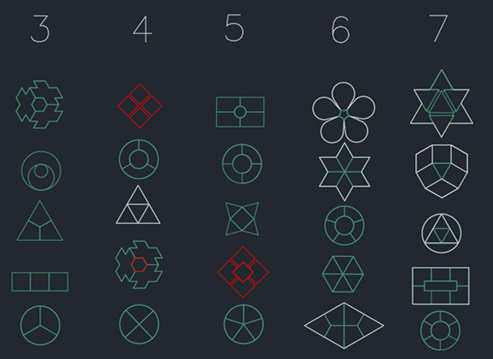
Directions on how to configure this symbology are in the Status-Indicator-Symbology repository. When you download the .zip file, this is what is included:
- How to documentation:
- What you downloaded
- Loading and utilizing the custom symbology in the Dictionary Render
- Customizing the symbology and domains to complement your unique needs
- Sharing dictionary symbology to your ArcGIS Enterprise or ArcGIS Online organization
- Auto updating the symbology using scripting or ArcGIS Survey123
- Style files
- You will need an ArcGIS Pro 3.0 release or later to utilize these symbology sets.
- Geodatabase containing domains and example feature classes
- Three walkthrough gifs for the “Customizing The Symbology” section
Please log issues by using the “Issues” section of the GitHub repository.
References:
- Create custom dictionary styles for ArcGIS – Blog describing custom dictionary renderers with example renderers.
- Seven handy tips for getting started creating a custom dictionary style – Top tips for creating your own custom dictionary renderer.
- Visualize data with dictionary renderer – Developer documentation describing how to create a dictionary renderer with the ArcGIS Maps SDK for JavaScript.
- Display symbols with a dictionary renderer – An overview of dictionary renderers.
- Authoritative Esri Dictionary Styles – web – Esri web dictionary styles.
- Authoritative Esri Dictionary Styles – desktop – Esri desktop dictionary styles.
- Esri Dictionary Renderer Toolkit Github Repo – GitHub repo describing custom dictionary renderers.


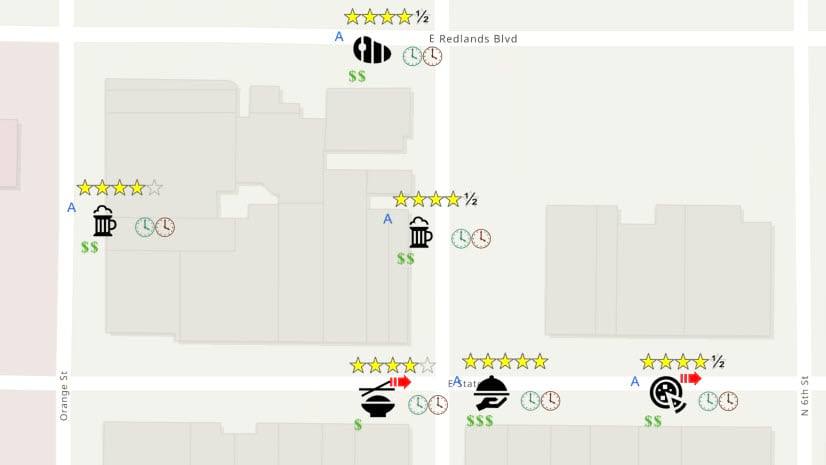
Article Discussion: